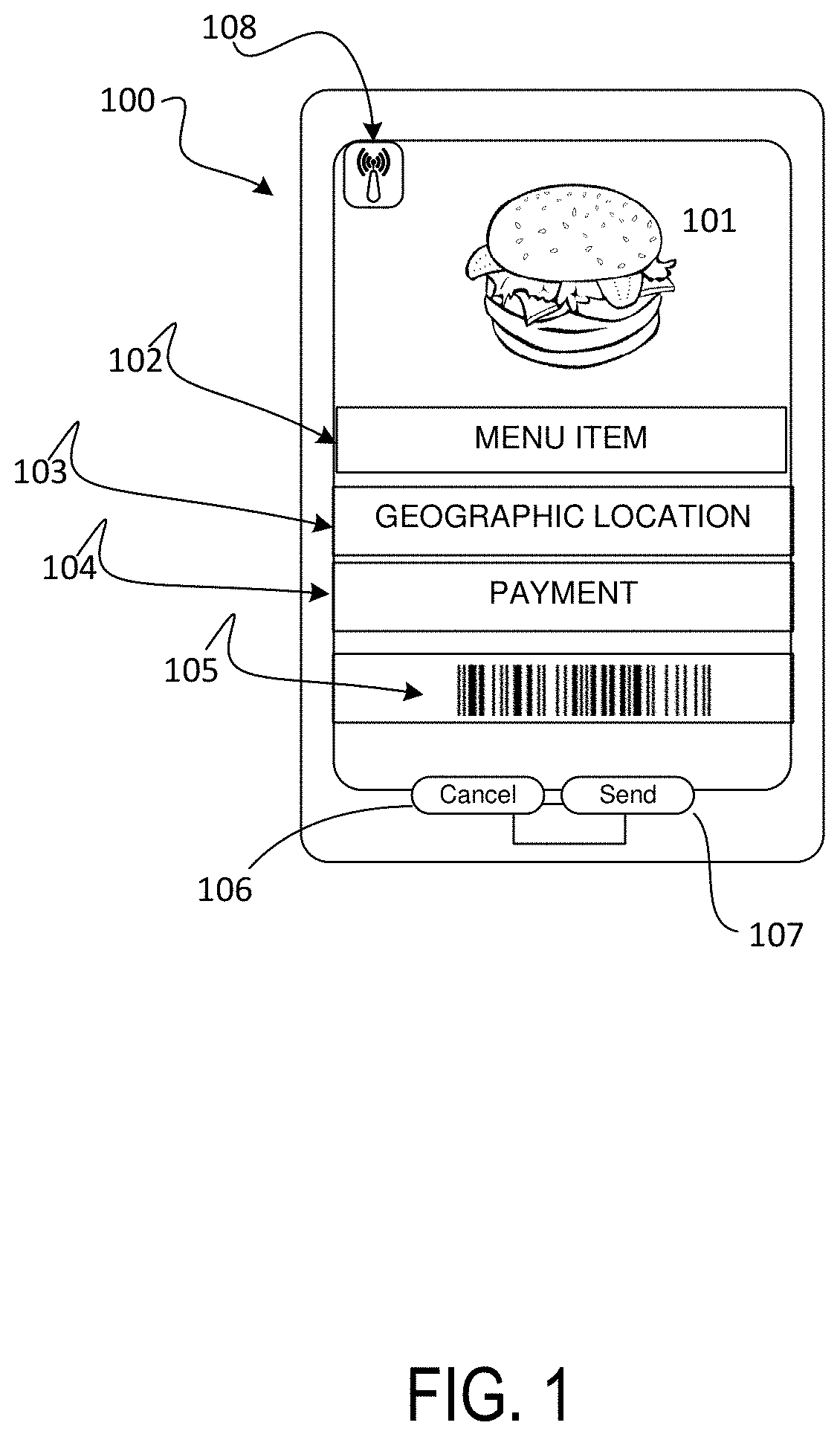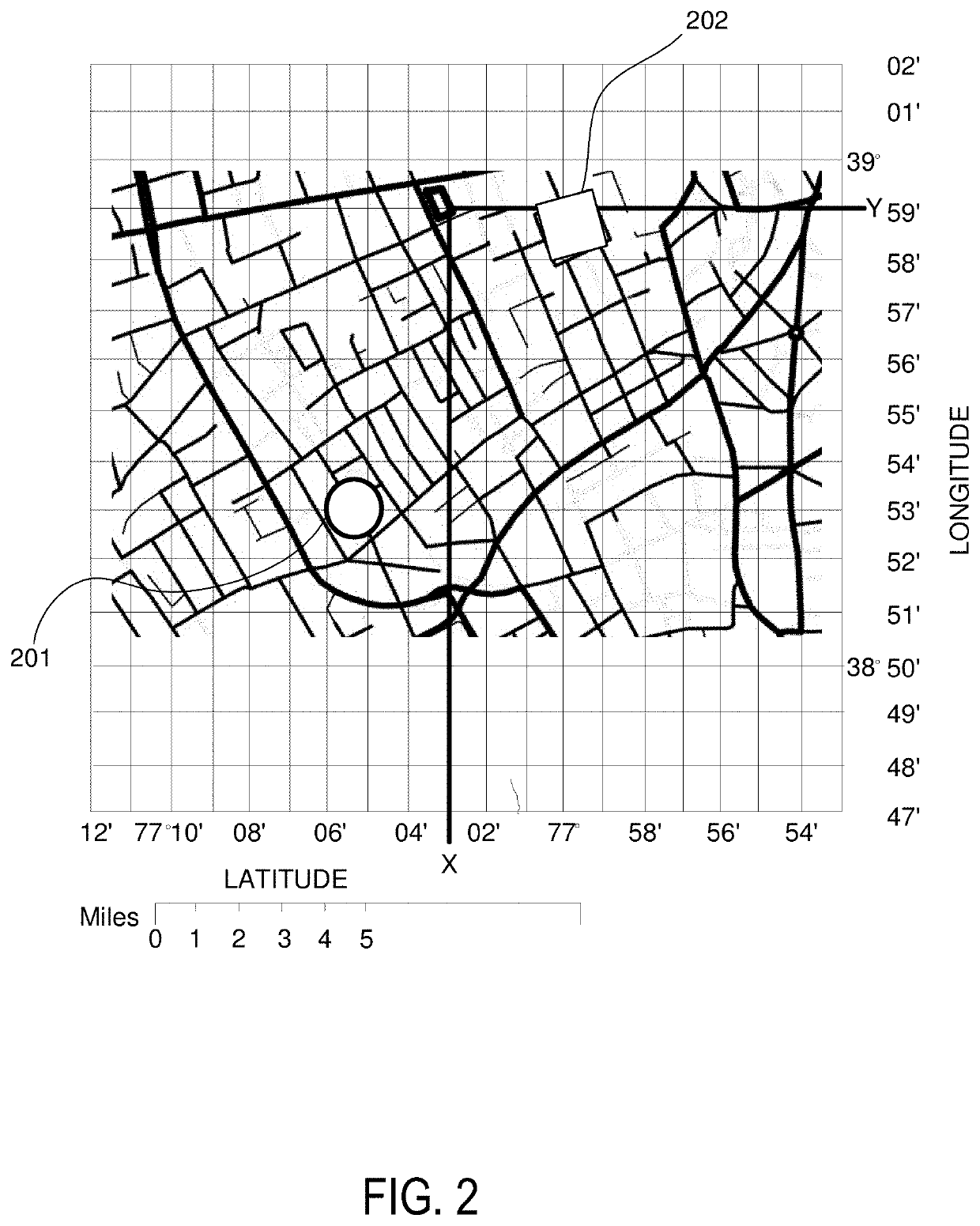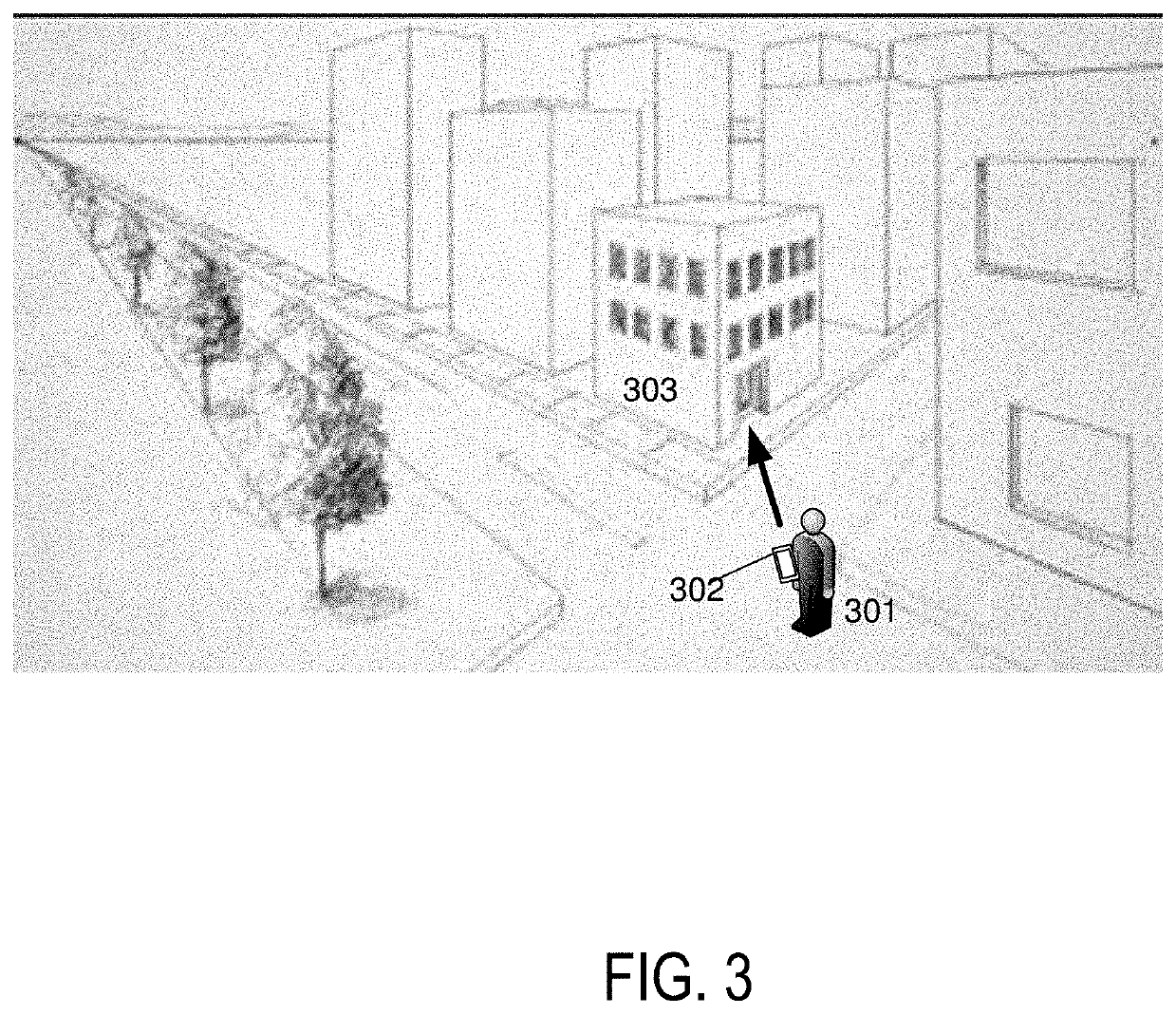Drive-thru / point-of-sale automated transaction technologies and apparatus
a technology of automated transaction and drive-thru, applied in the direction of instruments, data processing applications, electromagnetic radiation sensing, etc., can solve the problem that the architecture of pre-transaction payment sharing methods may not exist, and achieve the effect of reducing delivery times and saving delivery services crucial time and money
- Summary
- Abstract
- Description
- Claims
- Application Information
AI Technical Summary
Benefits of technology
Problems solved by technology
Method used
Image
Examples
specific examples
[0223]Ordering Process at a Kiosk
[0224]The methods, apparatus, and application software as have been described may be used in some examples to enable use of kiosks in the ordering process. Referring to FIG. 16, at step 1600 the ordering process may optionally commence with a facial scan. At Step 1601, a user may be allowed to place an order at a kiosk, or on a mobile device first and then scan a resulting order barcode at the kiosk. At step 1602, the system devices may communicate the order, identification and other data to servers / cloud and receive information back to a mobile device to constitute a barcode. At step 1603, the process may continue with the issuing of an order to a restaurant to create a logistics order in kitchen and signals to a label printer to print a barcode. At step 1604, the kitchen of the restaurant may prepare the order and affix the label to a tray, cup, or other packaging. At step 1605, a member of the restaurant staff may place the prepared food order int...
PUM
 Login to View More
Login to View More Abstract
Description
Claims
Application Information
 Login to View More
Login to View More - R&D
- Intellectual Property
- Life Sciences
- Materials
- Tech Scout
- Unparalleled Data Quality
- Higher Quality Content
- 60% Fewer Hallucinations
Browse by: Latest US Patents, China's latest patents, Technical Efficacy Thesaurus, Application Domain, Technology Topic, Popular Technical Reports.
© 2025 PatSnap. All rights reserved.Legal|Privacy policy|Modern Slavery Act Transparency Statement|Sitemap|About US| Contact US: help@patsnap.com



